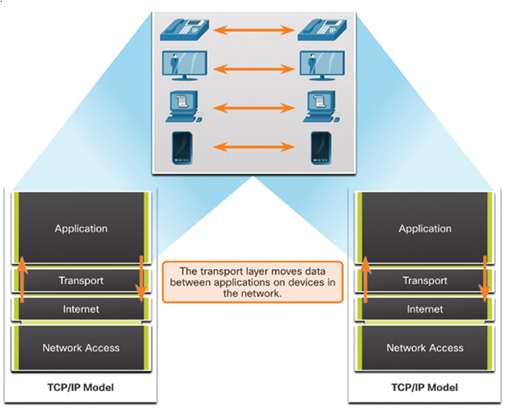Upon completion of this chapter, you will be able to answer the following questions:
• What is the purpose of the transport layer in managing the transportation of data in end-to-end communication?
• What are the characteristics of TCP?
• What are the characteristics of UDP?
• How do TCP and UDP use port numbers?
• How do the TCP session establishment and termination processes facilitate reliable communication?
• How are TCP protocol data units transmitted and acknowledged to guarantee delivery?
• What are the operations of transport layer protocols in supporting end-to-end communication?
This chapter uses the following key terms. You can find the definitions in the Glossary.
selective acknowledgment (SACK)
Transmission Control Protocol (TCP)
Looks like Olcay and Abay are finishing their shift at the utilities plant. Olcay tells Abay to have a good night. She tells him to be prepared to talk about all things that have to do with the transport layer in the morning.
Abay might want to read this chapter before he talks to Olcay in the morning. Are you familiar with the transport layer? You should be if you want to understand networking. The transport layer is responsible for logical communications between applications running on different hosts. Let’s get started!
As previously discussed, for communication to occur between source and destination, a set of rules or protocols must be followed. This section focuses on the protocols at the transport layer.
Role of the Transport Layer (26.1.1)
Application layer programs generate data that must be exchanged between source and destination hosts. The transport layer is responsible for logical communications between applications running on different hosts. This may include services such as establishing a temporary session between two hosts and the reliable transmission of information for an application.
As shown in Figure 26-1, the transport layer is the link between the application layer and the lower layers that are responsible for network transmission.

Figure 26-1 The Transport Layer in the TCP/IP Model
The transport layer has no knowledge of the destination host type, the type of media over which the data must travel, the path taken by the data, the congestion on a link, or the size of the network.
The transport layer includes two protocols:
